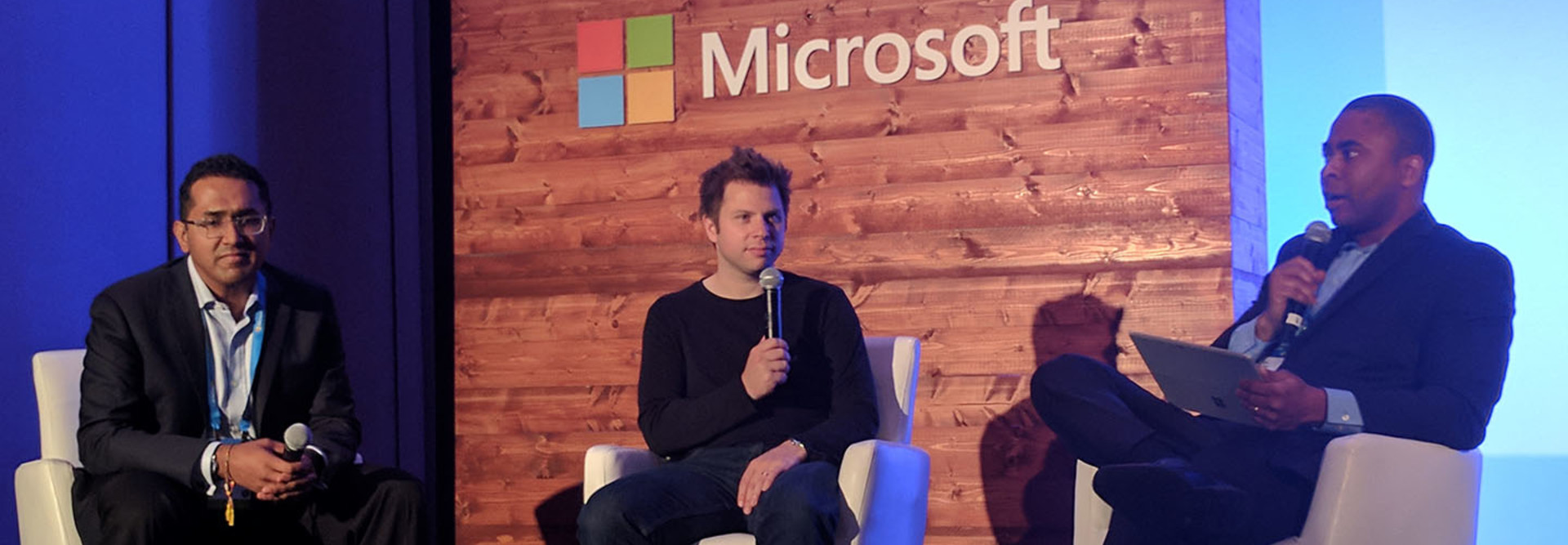Microsoft Ignite 2018: Shell Turns to Cloud, AI for Predictive Maintenance
Catching a maintenance issue before it becomes a major problem can save lives and money, especially on oil rigs, which are often in remote locations. To help make this possible, Shell is tapping the cloud in conjunction with data analytics and artificial intelligence.
This could tamp down the potential impact of maintenance issues, particularly when it comes to cost. In fact, a recent report by McKinsey found that predictive maintenance has the potential to save manufacturers billions by 2025.
The company is no stranger to emerging technology, and has recently partnered with Microsoft on several initiatives to enhance safety and effectiveness on oil rigs and at gas stations, driven partially by the need to enhance operational efficiency in the face of economic downturn.
“We see digitalization as a core driver in the energy transition, but also to improve our effectiveness and efficiency and to make us safer, as well,” said Dan Jeavons, general manager of data science at Shell, speaking on an energy and utilities panel at Microsoft Envision, the sister conference of Microsoft Ignite, taking place in Orlando, Fla., this week.
Shell Turns its Eye to Unsiloed Digitization
The company is focusing in on digital initiatives in a number of ways, starting with a top-down approach to digitization that starts with its C-suite. But in addition to building out a culture that actively investigates and pilots AI- and data-driven initiatives, Jeavons noted that the company is acutely aware that all pilots need to be able to function across the company of 86,000 employees.
“Most importantly, we try to bring together certain platforms that the business can leverage at scale, because it’s all very well writing Python scripts. But actually, where a company like ours is going to get the benefit in terms of digital technology is when we get this to scale and we get it right,” Jeavons said.
This starts, in many aspects, with data sharing. The company has put together a 2,000-person network that focuses on doing just that.
“We share knowledge of the things we’re working on, we share code, we share platform and we try to make it easy and accessible for people within our business to replicate what’s going on,” said Jeavons.
DOWNLOAD: See how IT infrastructures are changing to support emerging technologies!
AI Makes Predictive Maintenance Possible for Shell
Tapping AI to enable predictive maintenance is likely to have real and measurable effects both on a micro and macro level for Shell, particularly as the company has to grapple with what Jeavons calls its “very physical” value chain.
“From pipelines through to platforms to wind farms, you have to maintain a heck of a lot of kit in this value chain,” said Jeavons. “And if we can provide our operators with less information around what’s going to happen next and allow them to move toward condition-based monitoring of equipment, to move toward real-time detections of anomalies, that’s going to really change the game.”
In particular, the company has been looking at valves that could automate the monitoring of relevant maintenance variables.
“We’ve been monitoring hundreds of thousands of variables for many, many years. Typically, for any platform, we’re operating something like 1,000 parameters. It’s terrible for someone to monitor, and at least 200 to 300 are actually relevant variables,” said Jeavons.
To improve the process, the company is looking at building an algorithm that lives in Microsoft Azure and can take a “data-driven approach” to determining the most critical variables for operators to monitor every day.
“This is actually how I see AI developing and staying in our business, because there’s an opportunity for AI to be the human in the loop, to bring a second pair of eyes to the operator and to say, ‘Hey, look over here,’ and to allow the operators to do what they’re best at, which is diagnosing what’s going on with that piece of equipment,” said Jeavons.
Don’t miss a thing! Keep this page bookmarked for articles from the event. Follow us on Twitter at @BizTechMagazine, or the official conference Twitter account, @MS_Ignite, and join the conversation using the hashtag #MSIgnite.









